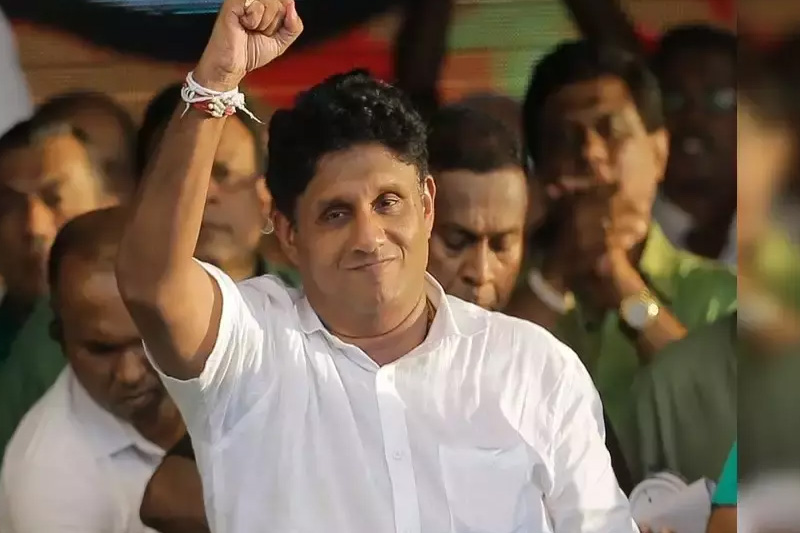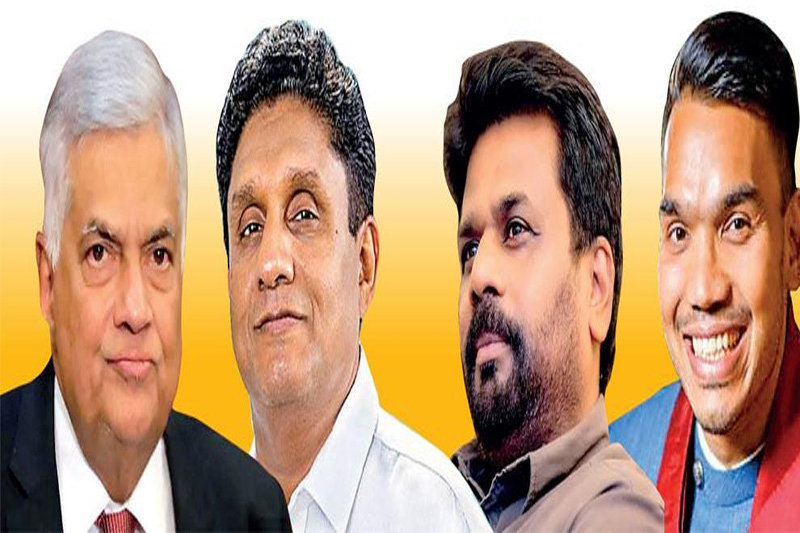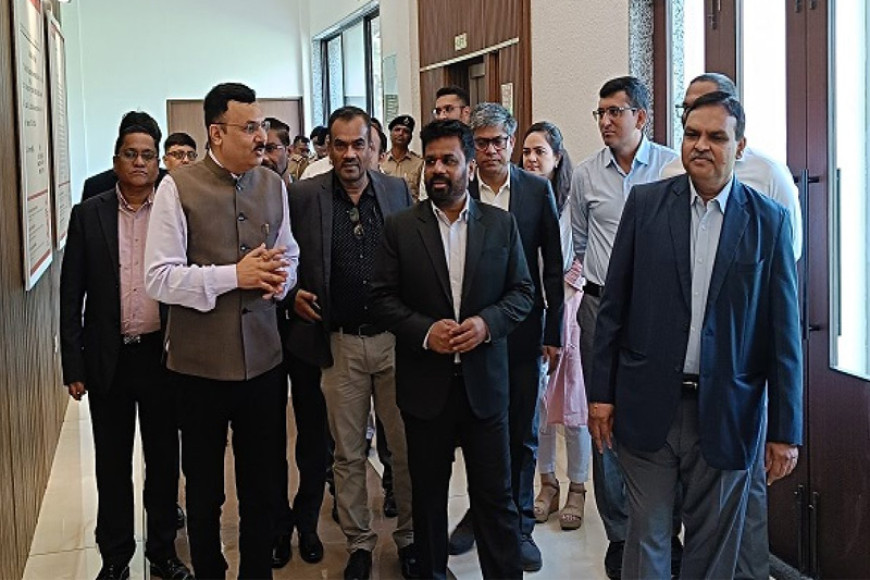By Rohana Jith
In just 13 days, Sri Lankans will head to the polls for what could be a decisive Presidential election, set against a backdrop of political and economic tension, where campaign rhetoric and grand promises dominate the landscape.
It is well recognized that any sitting president has a natural advantage over challengers due to the inherent power of the office. President Ranil Wickremesinghe benefits from this, including access to key intelligence inputs regarding his campaign and standing in the election.
The poll analysts stated that if the voter turnout reaches 80 percent, a candidate would need over 7 million votes to secure victory in the 2024 presidential election.
With 17.1 million registered voters, this level of turnout would mean 14 million people casting their ballots, presenting a significant challenge for the opposition, particularly for the National People’s Power (NPP) and its leader Anura Kumara Dissanayake, who would need to drastically increase his 2019 vote base.
Sajith Premadasa, who garnered approximately 5.6 million votes in the 2019 presidential election, is closer to the winning mark but faces the unpredictable nature of voter sentiment, which can shift even at the last minute.

As election day nears, voters are urged to look beyond appealing promises and scrutinize the feasibility of the candidates' proposals. Leadership is not just about offering simple solutions during campaigns but about being accountable for the economic challenges that lie ahead.
The advantage of incumbency also extends to strategic political maneuvers. While Wickremesinghe was initially supported by the Sri Lanka Podujana Peramuna (SLPP) and anticipated crossovers from the Samagi Jana Balavegaya (SJB), these expectations were not fully realized.
The SLPP opted to back its candidate, and SJB leader Sajith Premadasa largely retained his party members, despite rumors of further defections.
All major candidates are making ambitious promises, but a critical question remains: how will these be funded in the context of Sri Lanka's severe fiscal constraints? Election promises must be grounded in the nation’s economic reality rather than making unattainable commitments that could further strain the economy.
The upcoming election follows Sri Lanka's economic collapse and the ousting of the former president, making India's influence particularly significant. India's role in shaping Sri Lanka's political landscape is underscored by National Security Advisor Ajit Doval's recent visit.
Doval's meetings with key political leaders, including Premadasa, Wickremesinghe, Namal Rajapaksa, and Dissanayake, highlight India's interest in ensuring a favorable outcome in the election, particularly concerning the Tamil and Muslim voter base.

During these meetings, Doval stressed the importance of democracy and India's concerns about Sri Lanka's political future. The support of the Tamil National Alliance (TNA) for Premadasa, following these discussions, has caused political ripples, particularly for Wickremesinghe, who had counted on TNA's backing.
As candidates continue to align their strategies to secure votes and influence, the shadow of India's involvement looms large, with the upcoming election likely to be shaped by both domestic and international pressures.
The Election Commissioner (EC) announced that this year a Presidential candidate can spend a maximum of Rs. 109 per voter. Which means Rs. 1.8 billion per candidate.
This means the Share of Voice (SOV) as a maximum can be Rs. 69 billion (if all candidates use the quota stipulated). However, a point to note is that only 19 candidates are active. Some allege that others are just named Presidential candidates done to break the voter base
On the Rs. 1.8 billion spend allocation the Finance Law stipulates that 60% of the value can be spent directly by a candidate and the balance 40% can be invested by the nominating party.
Whilst the concept received a positive acceptance, the issue is how can it be regulated given that ‘one’ election rally can cost approximately Rs. 300 million – the pre rally advertising and point of sale, the day of the event costs like the main stage, three colour backdrop, power speakers, two large cut outs on the side of the stage, a poster with a frame that was given to sections of the crowd with the candidates face for branding purposes, chairs and food/drink for all participants, special food for guest speakers, cost of a band/entertainment after the event, busses used for transport, etc. we also saw in some cases a giant marquee was erected.
Which means the total budget of 1.8 billion rupees will be under severe pressure given that a 30 second TV spot at prime time for an election candidate costs almost a million rupees.
Accordingly front running candidates like Ranil Wickremasinghe Sajith Premadasa and Anura Kumara Dissanayake must have spent billions of rupees for their campaigns. The cost for conducting rallies in 22 electoral districts for each of these candidates is around Rs. 6.6 billion.
The question asked by many is, how the Finance Law of 2023 can be implemented when in reality the Rs. 1.8 billion budget is actually wafer thin. The Election Commission was very firm when it announced that the violation of the law can even lead to a candidate being disqualified even after winning the elections. I guess time will tell.
If one does a deep dive on the 2019 elections, the Centre for Monitoring Election Violence (CMEV) went into the details and monitored the campaign expenditure. The total campaign costs was valued at Rs. 3.7 billion with the SLPP candidate accounting for 1.8 billion rupees spent which means 48% of the expenditure.
However the only cost that can be monitored is the advertising spend on TV, radio, press and to some extent social media. It’s practically impossible to track below the line activity like posters, billboards, election rally costs, entertainment and logistics, etc..



